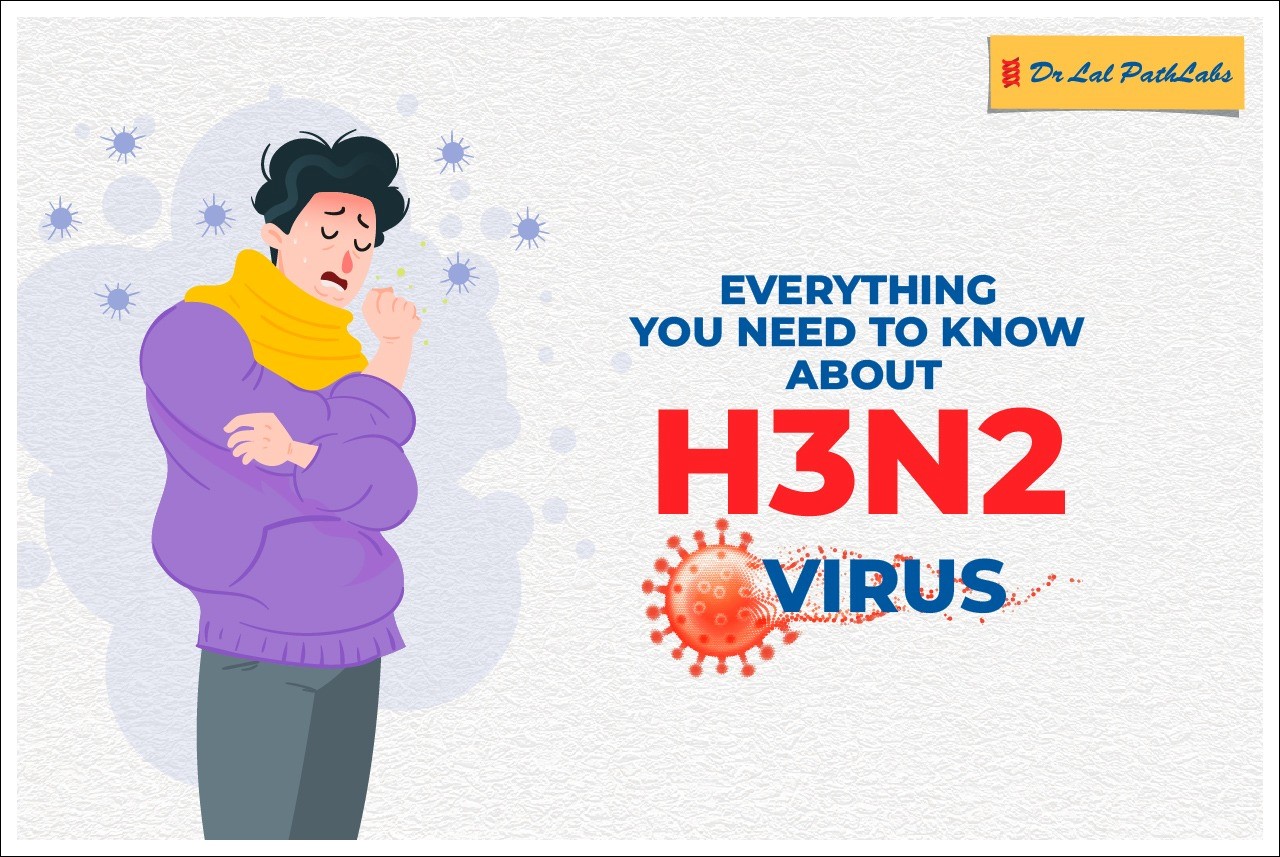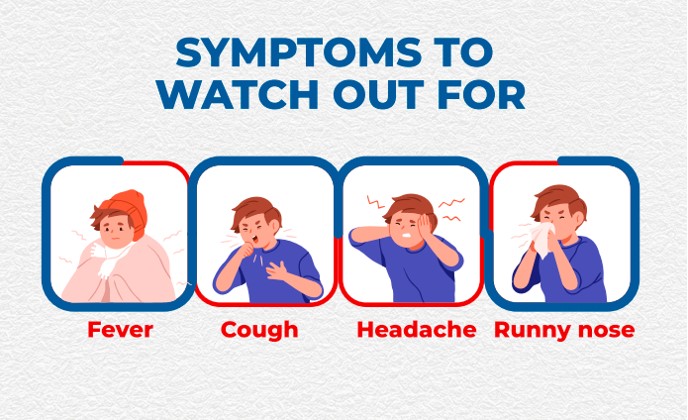Everything You Need to Know About H3N2 Virus (Influenza A)
H3N2 is a subtype of influenza A virus, also known as the ‘Hong-Kong flu’ that can cause seasonal flu outbreaks. While most people recover from H3N2 without complications, it can lead to serious illness, hospitalization, and even death in some cases. Here’s what you need to know about the H3N2 influenza virus, including its symptoms, diagnosis, treatment, spread and prevention.
 Symptoms of H3N2
Symptoms of H3N2
The H3N2 flu virus symptoms are similar to those of other types of influenza, including:
- Fever
- Cough
- Sore throat
- Runny or stuffy nose
- Headache
- Body aches
- Fatigue
Some people may also experience nausea, vomiting, and diarrhoea, although these symptoms are more common in children than adults. Symptoms typically appear within two to four days of infection and can last for up to a week or more.
 Diagnosis of H3N2
Diagnosis of H3N2
If you suspect that you have H3N2, you should contact your healthcare provider for an evaluation. Your doctor may order an RT-PCR test to confirm the diagnosis. This test involves taking a swab from your nose or throat and analyzing it for the presence of the flu virus.
Treatment of H3N2
Most people with H3N2 recover on their own without medical treatment. However, if you are at higher risk of complications, your doctor may prescribe antiviral medications.
These medications can help to shorten the duration of symptoms, reduce the severity of illness, and prevent complications such as pneumonia. It’s important to start antiviral treatment as soon as possible after the onset of symptoms, ideally within 48 hours.
In addition to antiviral medications, make sure to drink plenty of fluids to stay hydrated and get plenty of rest.
Spread of H3N2
H3N2 is highly contagious and spreads easily from person to person. The virus spreads through respiratory droplets that are released when an infected person coughs, sneezes, or talks. These droplets can land on surfaces and objects, where they can survive for several hours and potentially infect others who touch these surfaces.
Prevention from H3N2
The following are some preventative measures that can be taken to avoid the spread of H3N2:
Practice good hygiene: It is essential to practice good hygiene to prevent the spread of H3N2. Washing your hands frequently with soap and water for at least 20 seconds can help reduce the number of germs on your hands. Avoid touching your eyes, nose, or mouth as the virus can enter your body through these openings. Cover your mouth and nose with a tissue when you cough or sneeze, and discard the tissue immediately.
Stay home if you are sick: If you are experiencing flu-like symptoms, it is crucial to stay home and avoid contact with others to prevent the spread of H3N2. Rest, drink plenty of fluids, and avoid close contact with others until you feel better.
Disinfect surfaces: H3N2 can live on surfaces for up to 48 hours. It is crucial to disinfect surfaces that are frequently touched, such as doorknobs, countertops, and keyboards. Use a disinfectant spray or wipe to kill any germs on these surfaces.
Maintain a healthy lifestyle: Maintaining a healthy lifestyle can help strengthen your immune system and reduce the risk of contracting H3N2. Get plenty of sleep, exercise regularly, eat a healthy diet, and manage your stress levels.
Taking preventative measures to avoid the spread of H3N2 can help reduce the risk of contracting the virus. While vaccination is one of the most effective ways to prevent the spread of the virus, practising good hygiene, staying home if you are sick, disinfecting surfaces, and maintaining a healthy lifestyle are also important preventative measures. By taking these steps, individuals can help protect themselves and others from the flu.
Kids and H3N2 Virus
Children are particularly susceptible to the H3N2 virus, as their immune systems are still developing. Infants, young children, and children with chronic health conditions are at a higher risk of developing severe flu symptoms. It is essential for parents and caregivers to take preventative measures to protect children from the virus.
Parents should also encourage their children to practice good hygiene, such as washing their hands frequently and covering their mouth and nose when they cough or sneeze.
In the event that a child develops flu-like symptoms, they should be kept home from school or daycare and taken to a healthcare provider for assessment and treatment. By taking these steps, parents and caregivers can help protect children from the H3N2 virus and other strains of the flu.
Pregnant Women and H3N2 Virus
Pregnant women are also at a higher risk of developing severe symptoms from the H3N2 virus. Changes in the immune system, heart, and lungs during pregnancy can make women more susceptible to complications from the flu, such as pneumonia. Pregnant women who contract the flu are also at a higher risk of premature labour and delivery.
Pregnant women should also take precautions to avoid exposure to the virus, such as avoiding contact with sick individuals and practising good hygiene, including frequent handwashing.
In the event that a pregnant woman develops flu-like symptoms, it is crucial that she seek medical attention promptly to ensure that she receives appropriate treatment. By taking these steps, pregnant women can reduce their risk of developing severe complications from the H3N2 virus and protect the health of themselves and their unborn child.
Disclaimer:
This blog is for informational purposes only and should not be construed as advice or as a substitute for consulting a physician. It is not a substitute for medical advice or treatment from a healthcare professional.













